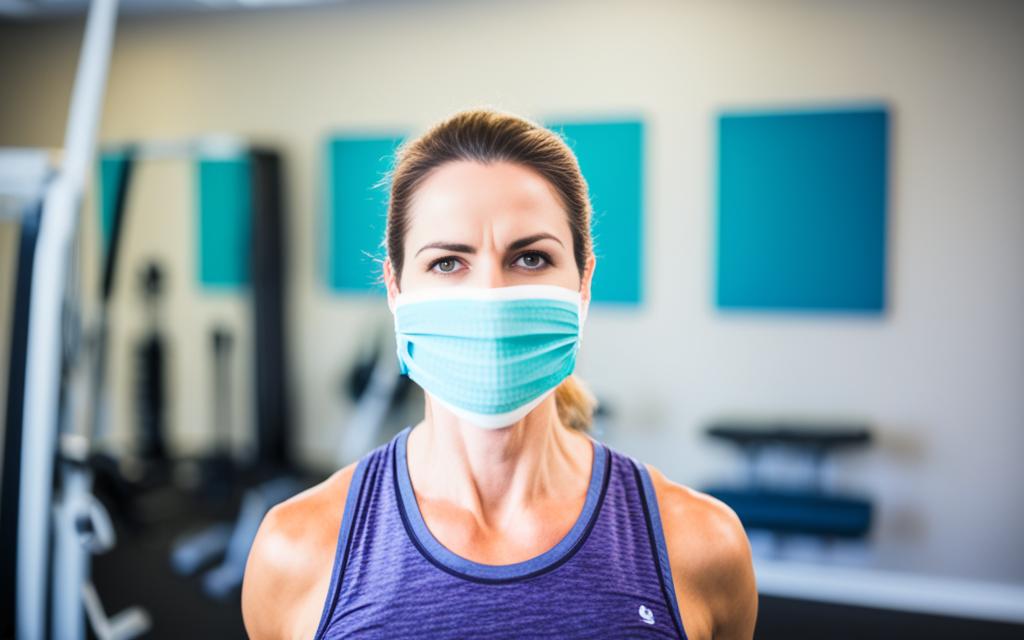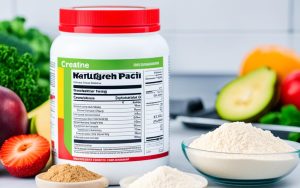If you’ve recently undergone a root canal procedure, you may be wondering if it’s safe to resume your exercise routine. After all, staying active is important for overall health and well-being. In this article, we’ll explore the topic of exercising after a root canal and provide insights into the recovery process and potential impact on dental health.
Key Takeaways:
- Exercising after a root canal is generally safe, but it’s important to consider the recovery process and consult with your dentist.
- Allow sufficient time for your mouth to heal before resuming physical activity.
- Some types of exercise may pose risks to dental health immediately after a root canal. Choose low-impact alternatives.
- Maintain proper oral hygiene alongside your exercise routine to promote healing and prevent complications.
- Consulting with your dentist will ensure personalized guidance for a safe and effective post-root canal workout.
Understanding the Root Canal Procedure
Before discussing the topic of exercising after a root canal, it’s important to have a clear understanding of the procedure itself. A root canal is a dental treatment that involves removing infected or damaged pulp from the innermost part of a tooth. This is necessary when the pulp becomes inflamed or infected due to deep decay, a cracked tooth, or repeated dental procedures.
The primary goal of a root canal is to save the tooth from further damage and alleviate any associated pain or discomfort. During the procedure, your dentist will carefully remove the infected pulp, clean the root canals, and seal them to prevent reinfection. In some cases, a dental crown may be placed on the treated tooth to restore its strength and function.
Recovery plays a crucial role in the success of a root canal. Proper healing allows for the restoration of dental health and helps minimize the risk of complications. Following your dentist’s post-treatment instructions is essential to ensure optimal recovery.
Recovery Time for a Root Canal
After undergoing a root canal procedure, every individual’s recovery timeline may vary. It’s important to allow sufficient time for your mouth to heal before engaging in physical activity. The recovery period following a root canal typically spans several days to a couple of weeks, depending on the complexity of the procedure and your body’s healing response. During this time, it’s essential to prioritize rest and give your mouth the opportunity to fully recover.
In the early stages of recovery, you may experience some discomfort, sensitivity, or swelling around the treated tooth and surrounding tissues. This is a normal part of the healing process and should gradually subside. However, it is crucial to avoid any strenuous physical activities or workouts that could potentially disrupt the healing process or increase the risk of complications.
Consulting with your dentist is vital to determine the appropriate timeline for resuming physical activity after a root canal. Your dentist will evaluate your specific case and provide personalized guidance based on the complexity of the procedure, your overall oral health, and any other factors that may influence your recovery. Following their advice will ensure a safe and seamless return to your regular fitness routine.
To give you a better idea of what to expect during the recovery period, here is a breakdown of the typical timeline:
- First few days: It is recommended to rest and avoid any strenuous physical activities. Focus on allowing your body to heal and reducing any swelling or discomfort.
- One week: By this time, most individuals start to experience significant improvement in their symptoms. However, it is still crucial to avoid activities that put excessive strain on your mouth, such as heavy lifting or intense cardio workouts.
- Two weeks: At this point, you should be nearing the end of your recovery period and ready to gradually reintroduce physical activity into your routine. However, it’s important to start slowly and listen to your body. If you experience any discomfort or pain during exercise, it’s advisable to scale back and give yourself more time to heal.
Remember, everyone recovers at their own pace, and it’s essential to follow your dentist’s advice for a safe and successful recovery. By allowing your mouth ample time to heal before resuming physical activity, you can ensure the best possible outcome for your oral health.
Potential Risks of Immediate Post-Root Canal Exercise
Exercising immediately after undergoing oral surgery, such as a root canal, can pose potential risks to your dental health. It’s important to be aware of these risks and take necessary precautions to ensure a smooth recovery. Here are some key considerations:
1. Increased Risk of Bleeding
Exercising vigorously after oral surgery can increase the risk of bleeding. Physical activity elevates your heart rate and blood pressure, which can disrupt the formation of blood clots that are essential for the healing process. This can lead to prolonged bleeding and delay the recovery period. It is advisable to avoid high-intensity exercises for at least the first few days following the procedure.
2. Dislodging Blood Clots
The formation of blood clots at the surgical site is crucial for proper healing. High-impact exercises or activities that involve sudden movements can dislodge these blood clots, leading to complications and delaying the recovery process. It is important to avoid activities such as running, jumping, or heavy weightlifting until your dentist gives you the green light.
3. Increased Swelling and Discomfort
Engaging in strenuous exercise immediately after oral surgery can potentially result in increased swelling and discomfort. The physical exertion can cause blood to rush to the head, increasing inflammation and pain. It is recommended to choose gentle exercises that do not strain your facial muscles, such as light walking or stretching, to promote blood circulation without exacerbating swelling.
4. Risk of Infection
The surgical site is susceptible to infection during the initial stages of recovery. Sweat and bacteria from exercise equipment or public spaces can increase the risk of infection. It is essential to maintain good oral hygiene and avoid touching the surgical area while exercising. Additionally, it is advisable to wipe down exercise equipment before use and use a clean towel or mat.
By understanding and mitigating these potential risks, you can promote a safe and efficient recovery after oral surgery. Always consult with your dentist before resuming any exercise routine after a root canal or any other dental procedure. They will guide you based on your specific condition and provide personalized recommendations to ensure optimal dental health during your recovery.

Safe Types of Exercise After a Root Canal
After undergoing a root canal procedure, it’s important to adjust your fitness routine to accommodate the recovery process. While certain types of exercises may be unsuitable immediately after a root canal, there are plenty of safe alternatives to keep you active without compromising your dental health.
Low-Impact Aerobic Activities
If you’re looking to maintain cardiovascular fitness without putting excessive strain on your teeth and jaw, low-impact aerobic exercises are a great option. Activities such as swimming, cycling, and brisk walking provide an excellent workout while minimizing the risk of discomfort or damage to your dental work.
Yoga and Pilates
Engaging in yoga or Pilates can help promote flexibility, strength, and relaxation, all while being gentle on your teeth and gums. These low-impact exercises focus on controlled movements and mindful breathing, making them ideal for your post-root canal fitness routine.
Resistance Training with Caution
While it’s generally best to avoid heavy lifting immediately after a root canal, you can still incorporate resistance training into your fitness regimen with caution. Opt for lighter weights and focus on exercises that don’t strain your jaw or teeth, such as bicep curls, tricep extensions, or bodyweight exercises like squats and lunges.
Stretching and Flexibility Exercises
Don’t underestimate the importance of stretching and flexibility exercises in your fitness routine. Incorporating stretches for different muscle groups can help improve your overall range of motion and prevent muscle tightness. Just remember to avoid any movements that put excess pressure on your oral cavity.
Safe Types of Exercise After a Root Canal
| Exercise Type | Description |
|---|---|
| Low-Impact Aerobic Activities | Swimming, cycling, brisk walking |
| Yoga and Pilates | Gentle movements and mindful breathing |
| Resistance Training with Caution | Lighter weights, jaw-friendly exercises |
| Stretching and Flexibility Exercises | Focused on improving range of motion |
Remember, it’s essential to listen to your body and consult with your dentist before incorporating any new exercises into your routine. By opting for low-impact activities and being mindful of your dental health, you can stay active and maintain your fitness goals while allowing for a healthy root canal recovery.

Precautions and Considerations for Exercising After a Root Canal
To ensure a smooth recovery and protect your dental health, it is important to take certain precautions and considerations when engaging in exercise after a root canal procedure. By following these guidelines, you can maintain an active lifestyle while promoting dental health recovery.
1. Allow Ample Time for Healing
First and foremost, it is crucial to give your mouth enough time to heal before resuming any strenuous physical activities. The recovery period after a root canal can vary from person to person, but it typically takes a few days to a week for the initial discomfort to subside. By allowing ample time for healing, you reduce the risk of complications and ensure a smoother recovery process.
2. Start Slow and Gradually Increase Intensity
When you feel ready to incorporate exercise into your routine, start with low-impact activities such as walking, light stretching, or gentle yoga. This will help your body adjust and minimize any strain on the dental area. As your recovery progresses, you can gradually increase the intensity of your workouts, always listening to your body and avoiding activities that cause discomfort.
3. Protect Your Teeth and Mouth
During exercise, it is essential to protect your teeth and mouth to prevent any accidental injury. If you participate in contact sports or activities with a risk of impact, consider wearing a mouthguard. A mouthguard acts as a protective barrier, reducing the chance of dental trauma during physical exertion.
4. Maintain Good Oral Hygiene
Even during the recovery period, it is crucial to maintain good oral hygiene practices. Brush your teeth gently twice a day using a soft-bristled toothbrush and fluoride toothpaste. Floss daily to remove any food particles or plaque buildup. Additionally, rinse your mouth with an antimicrobial mouthwash to help control bacteria and promote healing.
5. Listen to Your Dentist’s Advice
Your dentist is your best source of guidance and advice during the recovery period. Before resuming exercise, consult with your dentist to ensure that it is safe for you and to address any specific concerns you may have. Your dentist can provide personalized recommendations based on your oral health and the specific details of your root canal procedure.
Remember, dental health recovery is a gradual process, and it is important not to rush back into intense physical activities. Taking the necessary precautions and considering your dental health alongside exercise will help ensure a successful recovery and long-term well-being.
Oral Hygiene Practices During Recovery
Maintaining proper oral hygiene is crucial during the recovery period after a root canal. It is important to follow effective oral care practices to ensure the healing process is smooth and successful, especially when incorporating exercise into your routine.
Brushing and Flossing:
Continue to brush your teeth at least twice a day with a soft-bristled toothbrush. Be gentle around the treated area to avoid any discomfort or irritation. It is also essential to floss daily to remove any food particles or plaque buildup.
Rinsing with Saltwater Solution:
A saltwater rinse can help promote healing and reduce inflammation after a root canal. Mix half a teaspoon of salt in a glass of warm water and swish the solution around your mouth for about 30 seconds. Spit it out and repeat a couple of times a day.
Avoiding Certain Foods and Drinks:
During the recovery period, it is advisable to avoid hard, sticky, or crunchy foods that can put strain on the treated tooth. Limit your intake of sugary and acidic beverages as they can hinder the healing process and increase the risk of complications.
Regular Dental Check-ups:
Make sure to schedule and attend any follow-up appointments with your dentist. Regular check-ups allow your dentist to monitor your progress and address any concerns or issues that may arise during the recovery phase.
Remember, maintaining good oral hygiene practices plays a vital role in the overall success of your root canal treatment and post-recovery period. By combining proper dental care with exercise, you can ensure optimal oral health and an active lifestyle.
| Oral Hygiene Tips During Recovery: |
|---|
| – Brush your teeth gently with a soft-bristled toothbrush at least twice a day. |
| – Floss daily to remove any food particles or plaque buildup. |
| – Rinse your mouth with a saltwater solution a few times a day to promote healing. |
| – Avoid hard, sticky, or crunchy foods that can strain the treated tooth. |
| – Limit your intake of sugary and acidic beverages. |
| – Schedule and attend regular check-ups with your dentist for monitoring and guidance. |
Consulting with Your Dentist
Before you hit the gym after a root canal, it’s vital to consult with your dentist. Seek personalized guidance by discussing your specific case with a dental professional. They have the expertise to evaluate your oral health and provide recommendations tailored to your needs.
By consulting with your dentist, you can obtain valuable insights and ensure that you’re taking the necessary precautions when it comes to dental care and exercise. They will consider factors such as the complexity of your procedure, the extent of your recovery, and any potential risks associated with physical activity.
Remember, every individual’s dental health and recovery journey may differ, so it’s essential to receive personalized advice and guidance from a dental professional. By doing so, you’ll be able to make informed decisions and have peace of mind as you work toward maintaining an active lifestyle while ensuring proper recovery after your dental treatment.
Signs to Watch Out For During Exercise
Although exercising after a root canal is generally safe, it’s essential to pay attention to any signs or symptoms that could indicate a problem. Being aware of these warning signs during physical activity can help protect your dental health and prevent complications.
Here are some key signs to watch out for:
- The onset of severe toothache or sharp pain in the treated area
- Excessive bleeding from the gums
- Persistent swelling or inflammation
- Difficulty swallowing or breathing
- Loose or dislodged fillings or dental restorations
- Unusual sensitivity to hot or cold temperatures
- Increase in tooth sensitivity or discomfort
If you experience any of these symptoms while exercising after your root canal procedure, it is important to stop your physical activity immediately and seek immediate dental attention. Contact your dentist for guidance and inform them about your symptoms and recent dental treatment.
Remember that every individual’s healing process may vary, and it’s crucial to listen to your body’s signals. Never ignore any signs of potential complications, as prompt action can prevent further damage and ensure a successful recovery.
Staying vigilant during exercise after a root canal is crucial for your dental health. Whether you’re engaged in low-impact activities or high-intensity workouts, always prioritize your well-being and seek professional assistance if any concerns arise.
Conclusion
After undergoing a root canal procedure, it is generally safe to resume exercise and maintain an active lifestyle. However, it is crucial to prioritize the recovery process and seek guidance from your dentist to ensure dental health recovery. By following proper precautions and listening to your body’s signals, you can effectively balance dental care and exercise.
Remember, a personalized approach is key when it comes to dental health. Consulting with your dentist before resuming exercise is highly recommended, as they can provide tailored advice based on your specific case. Your dentist will consider factors like the complexity of the root canal, your overall oral health, and any specific restrictions or precautions you may need to take.
During the recovery period, it is vital to maintain good oral hygiene practices alongside your exercise routine. This includes brushing and flossing regularly, as well as using any prescribed mouth rinses or medicated products. By taking care of your dental health while staying active, you can support the healing process and reduce the risk of complications.
FAQ
Can I exercise immediately after a root canal?
It is generally recommended to avoid strenuous exercise immediately after a root canal to allow your mouth to heal. Consult with your dentist for specific recommendations.
How long should I wait before exercising after a root canal?
The recovery period varies for each individual, but it is typically advised to wait at least 24 to 48 hours after a root canal before resuming physical activity. Your dentist can provide personalized guidance based on your specific case.
What are the potential risks of exercising right after a root canal?
Exercising too soon after a root canal can increase the risk of dislodging the temporary filling or causing bleeding. It is important to allow sufficient time for the treated tooth to settle before engaging in physical activity.
What types of exercise are safe after a root canal?
Low-impact exercises such as walking, yoga, and light stretching are generally considered safe after a root canal. However, always consult with your dentist before starting any exercise routine.
Are there any precautions I should take when exercising after a root canal?
It is important to listen to your body and avoid any exercises that cause discomfort or put pressure on the treated area. Maintain good oral hygiene and follow your dentist’s instructions for oral care during the recovery period.
When should I consult with my dentist before exercising after a root canal?
It is advisable to consult with your dentist before resuming exercise after a root canal, especially if you have any specific concerns or complications. Your dentist can provide personalized recommendations based on your dental health.
What signs should I watch out for during exercise after a root canal?
Pay attention to any increased pain, swelling, bleeding, or unusual sensations in the treated area during exercise. If you experience any of these symptoms, seek immediate dental attention.




